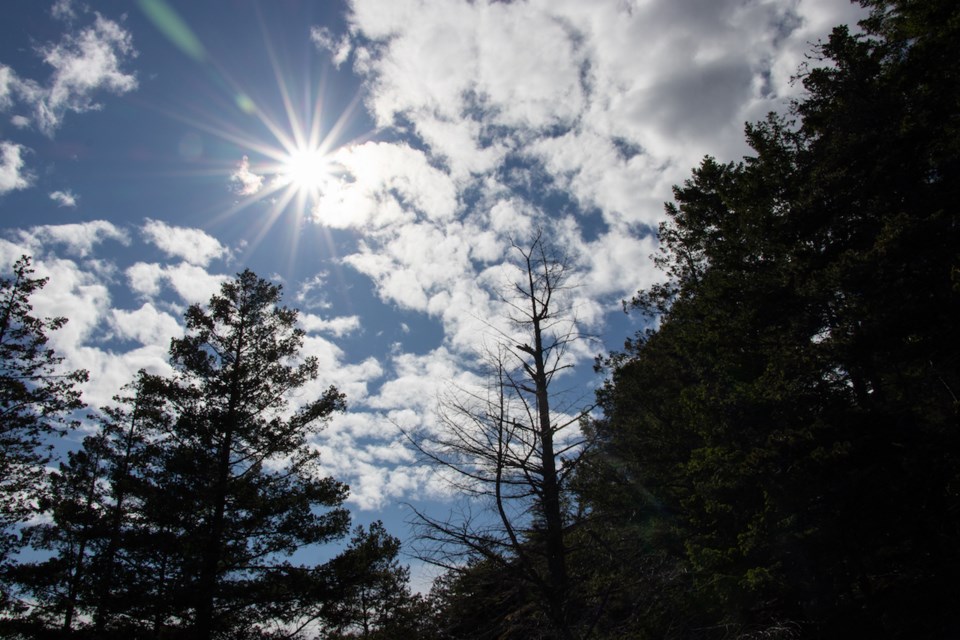Humidity and daily temperature must be considered together to determine a drought condition for the natural environment; precipitation alone or the lack of them, may not be the main reason of such a condition.
Low average temperature, day and night, will allow plants to tolerate relatively dry soil conditions; up to 5C, plants are in vegetative mode with no evaporation, they will require a minimum amount of water from the soil.
However local conditions of light and sandy soil, shallow ground on rocky formation, limited soil autonomy in pots and containers (as in raised beds) do not conform to the same measures, humidity being altered rapidly within the amount of soil available and by the density and quality of that soil (loamy versus organic top soil).
Such conditions vary also even more in exposed areas of sheltered and sunny South and Southwest embankments, as well as windy Northern and Northeastern exposures. Heat and cold variations between day and night modify the relative humidity of those areas, potential drought will be present, whatever the normality elsewhere.
Summer droughts, as we know them, are the result of climate change, with higher overall temperatures during periods of several weeks, without any precipitation at all to refill the underground water table depleted naturally or by abusive use of the water reserves. However, here again, the temperatures and precipitations must be considered together within the time involved (summer and fall) for the relation and the consequences they have with nature.
Species used to moderate temperature variations and regular rainy conditions such as Red cedar (Thuya plicata), Hemlocks (Tsuga Canadensis), large leaf Maple (Acer grandifolia), Arbutus (Arbutus Menziesi), Salal (Gaultheria Shallon) are being stressed to their survival limit and a number will disappear in more exposed locations.
Comparing the data of the past 25 years, similar conditions for April occurred 4 times in 1998, 2004, 2016, 2020, regarding their monthly precipitations. Both 2016 and 2020 had 10 rainy days in April: 39.8 mm in 2016, 33.8mm in 2020. Yet a major difference separates those two years: their temperatures. In 2016 the average maximum for the month was 17 C, with extremes of 28.8 C. average low temperature of 8.6 C with extreme low of 4.8 C; while in 2020 the average maximum was 14.2 C and average low of 5.7 C with extreme low of 0.7 C.
In 2020, April was a relatively cold month with 10 days of precipitation, after a cold month of March with 91mm of precipitation. As a consequence this year everything is still green and healthy at the start of the blooming season; moderate temperature and precipitation will probably help the pollination of most of our fruit trees. Rain in May will be the decisive factor of a potential early drought on Bowen Island.
André Chollat and Anne Franc de Ferrière have recorded rainfall on Bowen since 1992. André trained as a horticulturist in France. For 32 years André worked with Radio Canada informing about plants and related topics.



